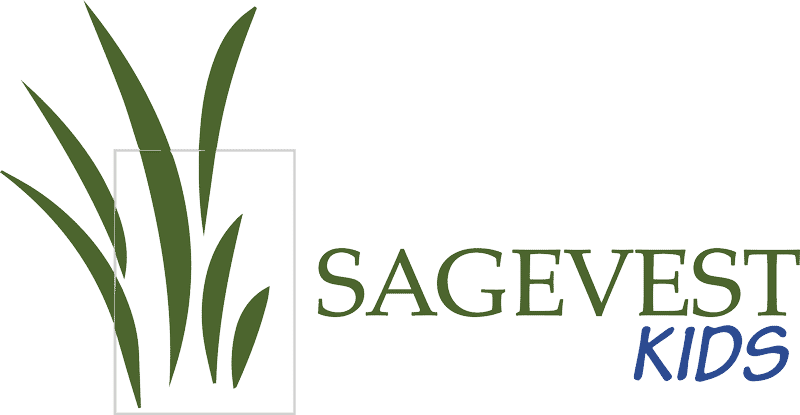
Most kids view learning about money as a bridge to adulthood, and there are great books for all ages. For younger readers, caregivers can read aloud and explain new ideas. Older readers will enjoy books about financial concepts, budding entrepreneurs who build businesses, and more.
Little Critter: Just Saving My Money
A Little Critter book in which the protagonist learns about earning money and saving it to achieve financial goals (in this case, a new skateboard). This book introduces the concept of a savings account and reinforces the importance of doing chores, especially as a way to earn income.
Recommended age: Preschool to 1st grade
The Berenstain Bears’ Dollars and Sense
Let the familiar Berenstain Bears family teach your children about managing their money! This book introduces the concept of using money to buy things while discouraging the idea of spending your money carelessly, or all at once. It explains things like allowances and how to write a check, even including some tear-out checks that can be used by children to manage their savings and practice balancing a checkbook in real life. It also includes two pages of fun stickers.
Recommended age: Preschool to 2nd grade
The Berenstain Bears’ Trouble with Money
This Berenstain Bears story uses familiar characters and a simple plot to encourage kids to earn their own money and save it. The book introduces the concept of allowances, banks, interest, and why you should always have a “nest egg”. It also includes two pages of stickers!
Recommended age: Preschool to 2nd grade
A Dollar for Penny
In this starter book for beginner readers, Penny decides to open up a lemonade stand. Follow her day and practice simple addition as she learns about the worth of different coins. This book also encourages the idea of saving money in order to meet a financial goal.
Recommended age: Preschool to 2nd grade
A Kids Book About Money
This book introduces kids to the key aspects of money: what it is, how to earn it, and how to use it sensibly. In an easy to read format and with a conversational style, kids learn the basics of the forms money can take — bills, coins, digital coins, checks — and the differences between wants and needs.
Recommended age: Preschool to 3rd grade
One Cent, Two Cents, Old Cent, New Cent
This is a fun, non-fiction book written in the style of Dr. Seuss. Children will learn a variety of facts about the history of money, including what people did before money, why currency was created, the different kinds of currency, coins from around the world, how coins are made, the origin of banks, and more!
Recommended age: Preschool to 4th grade
My First Book of Money: Counting Coins
This Kumon workbook uses learning about coins to strengthen math skills such as counting and addition. Review the numbers 1 to 100 and then practice math using coins from the penny to the quarter.
Recommended age: Kindergarten to 2nd grade
Max and Ruby’s Bunny Money
Join Max and Ruby as they go to the mall and learn about the basics of money and math. This book teaches children about saving money, budgeting, why careless spending is bad, and the concept of change while encouraging kids to practice their addition and subtraction skills.
Recommended age: Kindergarten to 2nd grade
Lily Learns About Wants and Needs
Learn alongside Lily as she is introduced to the difference between wanting something and needing it. This concept is emphasized throughout four different chapters. Questions keep your children involved in the book and encourage them to apply the content to real-world situations. The book also includes a glossary, an index, a “make your own poster” activity, and suggestions for further reading.
Recommended age: Kindergarten to 2nd grade
Alexander, Who Used to Be Rich Last Sunday
Read the plight of Alexander, who was given a dollar as a present, but quickly spent it all. This book acts as an introduction to money management and enforces lessons such as the fact that saving money might be difficult at times, but in the end, it’s worth it. The book also introduces children to the idea of fines as a punishment for breaking rules or doing something bad.
Recommended age: Kindergarten to 3rd grade
The Coin Counting Book
This informative, non-fiction book teaches children about all the different coins plus how much they’re worth. It’s an easy and fun read thanks to the rhyming scheme and encourages addition skills.
Recommended age: Kindergarten to 3rd grade
How the Second Grade got $8,205.50 to Visit the Statue of Liberty
In this humorous and outlandish story, read the notes of Susan Olson, the 2nd grade treasurer, as she reports on her class’ journey to raise money for a field trip to the Statue of Liberty. The story offers different ways to earn money and introduces the concepts of expenses versus profits.
Recommended age: Kindergarten to 3rd grade
Jenny Found a Penny
Join Jenny while she hunts for different coins, learning what kind of coins are out there and how much they’re worth. Practice addition skills, discover what sales tax is, and learn about the importance of saving money for special occasions. This book also encourages doing chores as a way to earn money.
Recommended age: Kindergarten to 3rd grade
Lemonade in Winter
This is the tale of Pauline and John-John, two ambitious children who try to fulfill their dream of opening a lemonade stand in winter. The book provides a detailed description of different coins and how much they’re worth. It also encourages addition while introducing the concepts of expenses versus profit.
Recommended age: Kindergarten to 3rd grade
The Go-Around Dollar
This book provides a variety of important information through a winning combination of fiction and non-fiction. Come along on the journey of a dollar as it passes from person to person while you learn interesting facts about money, such as how dollars are made, what they’re made of, how many dollar bills are lost every day, how long a dollar bill lasts, and how to replace a dollar bill if you damage it.
Recommended age: Kindergarten to 5th grade
Pigs Will Be Pigs: Fun with Math and Money
Follow the Pigs family as they search for enough money to go out to eat! This book introduces children to the different kinds of coins and bills, plus how much they’re worth. Practice your addition and problem-solving skills throughout the story and with some fun puzzles included at the end.
Recommended age: Kindergarten to 5th grade
National Geographic’s Kids Everything Money
A non-fiction, comprehensive overview of many important money-related topics, such as how we define money, how has money changed over time, the differences of money in different cultures, why money is important to society, how money is made, how money has changed with technological advances, how prices have changed over time and more. There are also fun money-related topics such as money myths, famous financial crimes, becoming a coin collector, and how to make origami from paper bills. Large, vivid photos and frequent trivia make the book even more engaging. It ends with an afterword about being charitable with your money, a glossary, an index, lists of cool places to visit, and a collection of books, games, and websites where your child can learn more.
Recommended age: Kindergarten to 8th grade
The Penny Pot
Charming illustrations and a simple story about saving up for face-painting allow kids to become familiar with the different coins and how much they’re worth. Practice addition to figure out when you have enough money to get your face painted! This book also includes a page of activity suggestions for reinforcing the story’s money and math concepts, as well as a list of suggestions for further reading.
Recommended age: 1st grade to 4th grade
The Lemonade War
This novel is the first book in “The Lemonade War” series. The rich story and relatable characters and concepts make this book an engaging yet educational read. As siblings, Evan and Jessie battle to make more money selling lemonade. Readers will practice their math skills and learn about marketing and sales. Children will also learn financial terms such as slump, joint venture, underselling, value-added, profit margin, franchise, crisis management, and more in a clear, easy-to-read way. This novel emphasizes the importance of saving money for a goal and being philanthropic.
Recommended age: 3rd grade to 6th grade
Lunch Money
In this novel, Greg – a money-savvy young student with the goal of becoming rich – works hard to earn money as a comic book writer, even when faced with competition like other students and his principal. As he learns relatable lessons about school, friends, and family, he also learns financial lessons such as the different types of coins and bills, how to earn money by doing chores and jobs, the importance of starting a savings account, and the definition of terms like interest, mass production, and market dominance. Ultimately, the most significant lesson Greg learns is that money is important, but it shouldn’t be the most important thing in your life.
Recommended age: 3rd grade to 6th grade
Money Sense for Kids
Chock full of illustrations, tables, and graphs, this book acts as a comprehensive overview on almost everything to do with money. Through lessons such as the history of money, why you should start a savings account, how to read a bank statement, how to use an ATM, and what stocks are and why you should invest in them, children will learn the background of money, how to earn it, and what to do with it. Each chapter ends with a fun activity that reinforces the material, and the book ends with puzzles and games to encourage money knowledge.
Recommended age: 3rd grade to 8th grade
Investing for Kids: How to Save, Invest, and Grow Money
This book covers stocks and bonds, how to invest in them, and teaches about the concepts of “risk” and “reward.” Kids learn what a diverse portfolio means and how to make their money grow.
Recommended age: 8-12
Note: This list does not represent SageVest’s endorsement of any of the products discussed.






